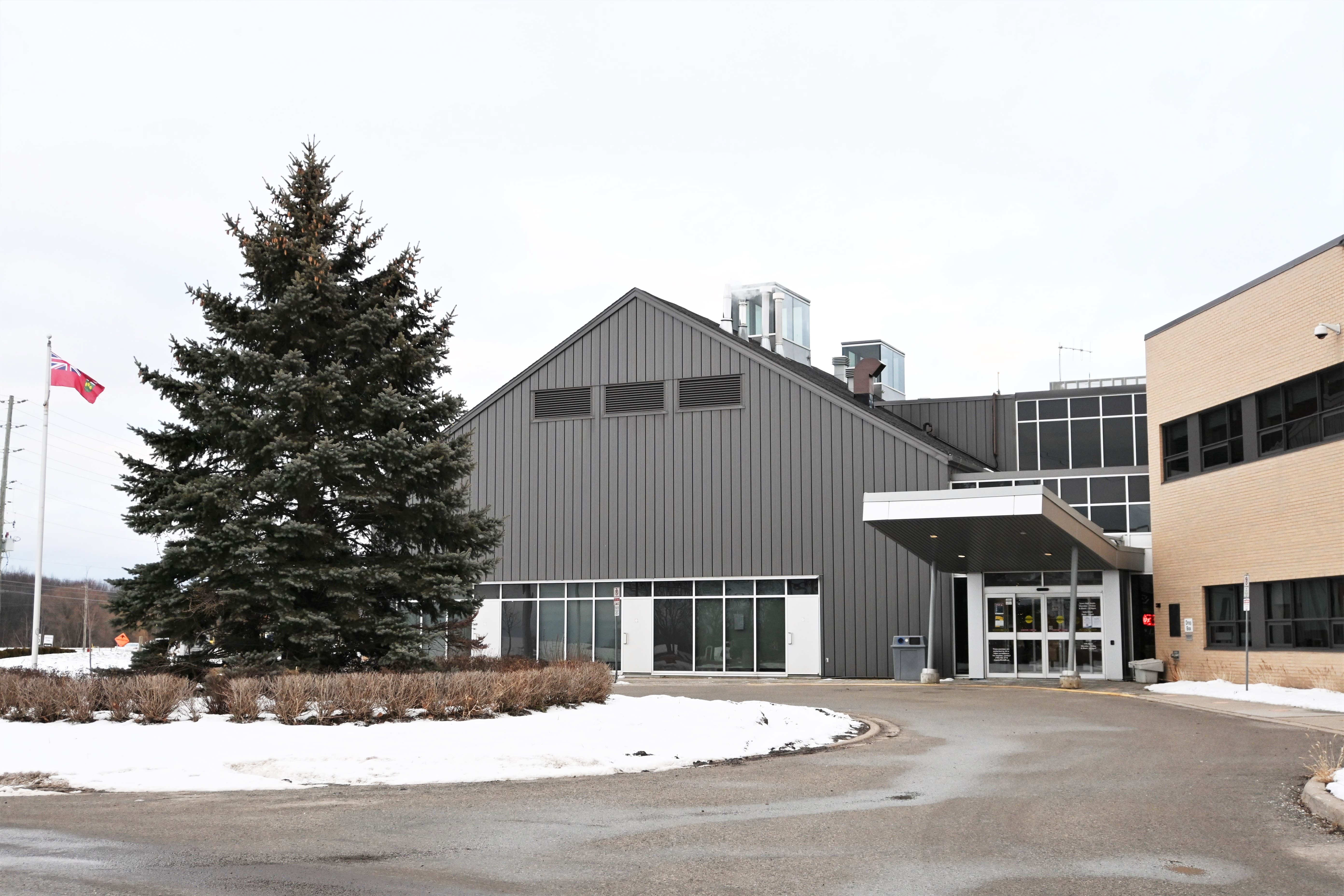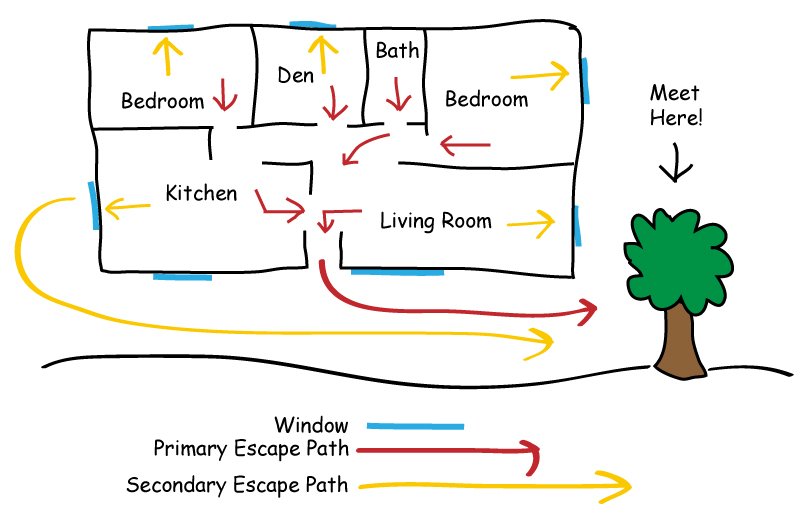Fire Safety and Prevention
Starting January 1, 2026, changes to the Ontario Fire Code will require carbon monoxide (CO) alarms on every floor of the home, not just near bedrooms. Learn more about the changes.
The best way to protect yourself during a fire is by being prepared and knowing how to respond. Innisfil's Fire Prevention team can help with your fire prevention needs, including various types of fire safety inspections.
Your role in fire safety
Everyone has a role in fire safety. Review specific legal requirements of homeowners, business owners, landlords and tenants when it comes to fire prevention, detection and reporting.
Smoke alarms |
|
When properly installed and maintained, smoke alarms can be the difference between life and death. It's the law to have working smoke alarms installed on every storey of your home and next to all sleeping areas. Make sure your smoke alarms are working by:
September 28 each year is Test Your Smoke Alarm Day. Be prepared to be Saved by the Beep!
|
New carbon monoxide alarm requirements |
|
As of January 1, 2026, updates to the Ontario Fire Code require additional carbon monoxide (CO) alarms in houses and multi-unit residential buildings. These changes are designed to provide earlier warning and stronger protection for residents. What's changing:
These requirements apply to all residences, both existing and new. Even if you already have a CO alarm, you may need to install additional alarms to meet the updated rules. Review our safety tips to learn more about how to protect yourself from CO. |
Create a home escape plan |
|
There's no time to waste during a fire. Everyone in your home needs to know what to do and where to go when the smoke alarms sound. Take a few minutes with everyone in your home to make a fire escape plan using the steps below or this escape plan template. Draw a floor planDraw a floor plan of your home that includes all doors and windows. Show two ways out of every room, if possible. Make sure to account for special needs, such as who will assist the very young, older adults, people with disabilities or pets. Set a meeting place outsideChoose a meeting place outside of your home, such as a tree, pole or mailbox. The meeting place should be a safe distance from your home. This is where everyone in your home will plan to meet during an emergency. Practice the escape planPractice the escape plan with all members of your household. Practice during the day and at night at least twice per year. Try different escape routes each time and teach children to escape on their own, in case you're unable to help them. Make sure to account for special needs, such as who will assist the very young, older adults, people with disabilities or pets.
|
Fire Safety Plans for building owners |
|
Under the Ontario Fire Code, most building owners are required to maintain a Fire Safety Plan. These plans ensure you have the necessary systems and procedures in place to keep your building and its occupants safe. Your Fire Safety Plans must:
Download our Fire Safety Plan Template to get started. This fillable template includes all the sections and forms you need to meet the Ontario Fire Code requirements. For questions or assistance, contact Innisfil Fire & Rescue Services at innisfilfire@innisfil.ca |
Book a home fire safety check-up
Don’t wait for an emergency to see if your home is fire ready. Innisfil Fire & Rescue Services is now offering free Home Fire Safety Check-Ups for Innisfil residents. Our Fire Prevention team will:
- Inspect your smoke and carbon monoxide (CO) alarms
- Review your home escape plan
- Provide helpful fire safety tips and guidance
Schedule a Home Fire Safety Check-Up
Fire safety tips
Throughout the seasons, there are particular events and activities that spark reminders for safety tips and best practices. Select any of the topics below to learn more about protecting your property and loved ones from the impacts of fire.
Alcohol, smoking, and fire safety |
|
Every year, fires and fire-related deaths result when someone has been drinking and then either tried to cook or mishandled a cigarette. Even when alcohol isn't involved, smoking while tired or distracted can result in disaster. Here are some tips to increase safety:
|
Babysitters and fire safety |
|
Leaving your children in the care of a babysitter is a serious responsibility for any parent. Following these guidelines will help to ensure the experience is a safe and worry-free one for you, the babysitter and your children. Before the babysitter arrives:
When the babysitter arrives:
|
Barbecue safety |
|
Few things can match the fun and enjoyment of a barbecue with family and friends. Practice sensible, safe barbecuing and your get togethers will be a sizzling success. Season openerAt the start of the barbecue season, do this three-step safety check of your BBQ:
When you take your propane tank to be refilled, transport it safely by placing it in a secure, upright position with the safety valve on top. It is preferable to transport it on the floor of the passenger compartment. Make sure the windows of the vehicle are open. Propane cylinders must be inspected and requalified or replaced every 10 years! Time to get cookingAlways be careful when igniting a barbecue. Take these steps in the right order:
Safety tipsEven a perfectly functioning barbecue needs to be handled with care. Do:
Don't:
|
Candle safety |
|
Candles are responsible for hundreds of fires in Canada every year. To minimize the risk of fire when burning candles in the home, take the following advice.
Choose the right holders
Prepare wisely
Don't take chances
|
Carbon monoxide |
|
Carbon monoxide (CO) is a colourless and odourless gas. It's known as the “silent killer” because you can't see it, taste it or smell it. You must have a working CO alarm in your home if you have:
CO alarms must be installed next to all sleeping areas and on every floor of the home. CO poisoning can be avoided with preventative measures and testing your alarms regularly. Where does CO come from?Carbon monoxide is a by-product of the combustion of fossil fuels. Most fuel-burning appliances, if properly installed and maintained, produces little CO. The by-products of combustion are usually safely vented to the outside. However, if anything disrupts the venting process (such as a bird's nest in the chimney) or results in a shortage of oxygen to the burner, CO production can quickly rise to dangerous levels. CO produced by gasoline engines or barbecues in a poorly ventilated space, such as a shed or garage, can enter a home through connecting walls or doorways. How can I eliminate sources of CO in my home?The best way to eliminate the possibility of CO poisoning is to ensure CO never has an opportunity to enter your home. Review this list to minimize the risk of CO in your home:
|
Fire hydrants |
|
In an emergency situation, every second counts. Blocked, concealed or difficult-to-access fire hydrants can slow emergency fire response. Hydrants covered in snow can be difficult to locate and uncovering them can waste valuable time. You can help reduce the risk by keeping nearby fire hydrants accessible and clear of ice and snow. Hydrants should have a clearing of one metre (three feet) around all sides and there should be a clear path from the street to ensure firefighters can easily access the hydrants. |
Fireworks safety |
|
Fireworks displays in your own backyard can be fun, but can also pose serious risks if proper precautions aren't taken. Innisfil Fire & Rescue Services suggests attending public fireworks displays hosted by a responsible organization if possible. If you still choose to have family fireworks or an informal neighbourhood display, please follow these guidelines. Be aware of your responsibilityBy choosing to set off fireworks on your own property, you are taking responsibility for any harm that should occur to people or property as a result. You may want to let your neighbours know and ensure that there will be no undue hardship as a result. Every year, numerous complaints are received because of fireworks being set off late at night or too close to other properties, and this can damage relationships between neighbours. If your yard is small and you cannot guarantee debris will fall only on your own property, do not use fireworks. Set them off safely
Dispose of them wisely
|
Halloween safety |
|
Before kids hit the streets this Halloween, check over costumes, decor and trick-or-treating plans for fire safety!
Not all adults follow our advice to keep lit pumpkins in a safe location, so prepare your kids:
Teach children what to do should their clothing catch fire:
|
Kitchen safety |
|
Unsafe cooking is a leading cause of fires in the home in Ontario. Cooking fires rank first in the number of injuries and second in the number of fire fatalities. Most kitchen fires are preventable. To prevent a kitchen fire in your home, here are some safety tips:
Electrical safety
|


